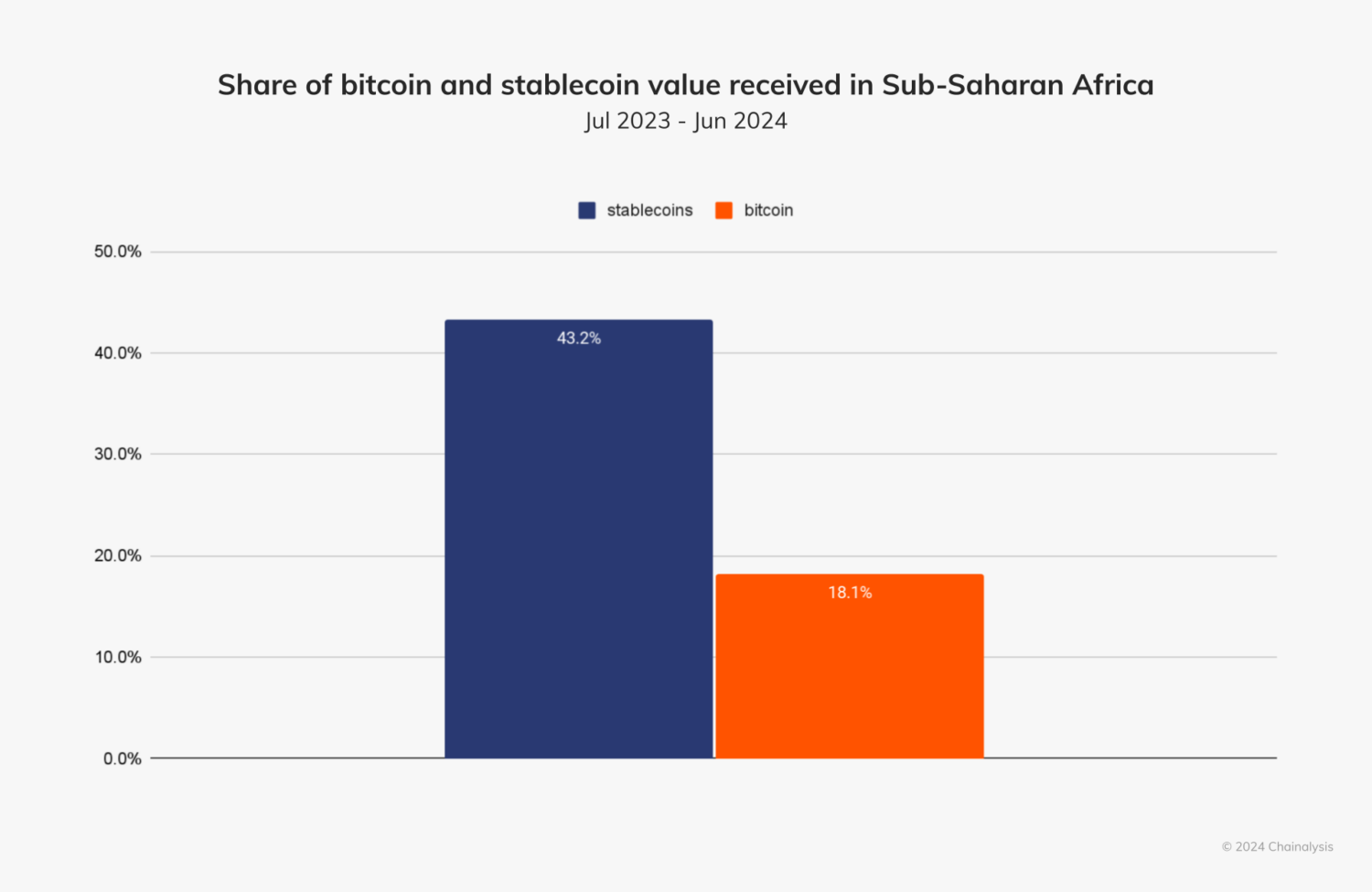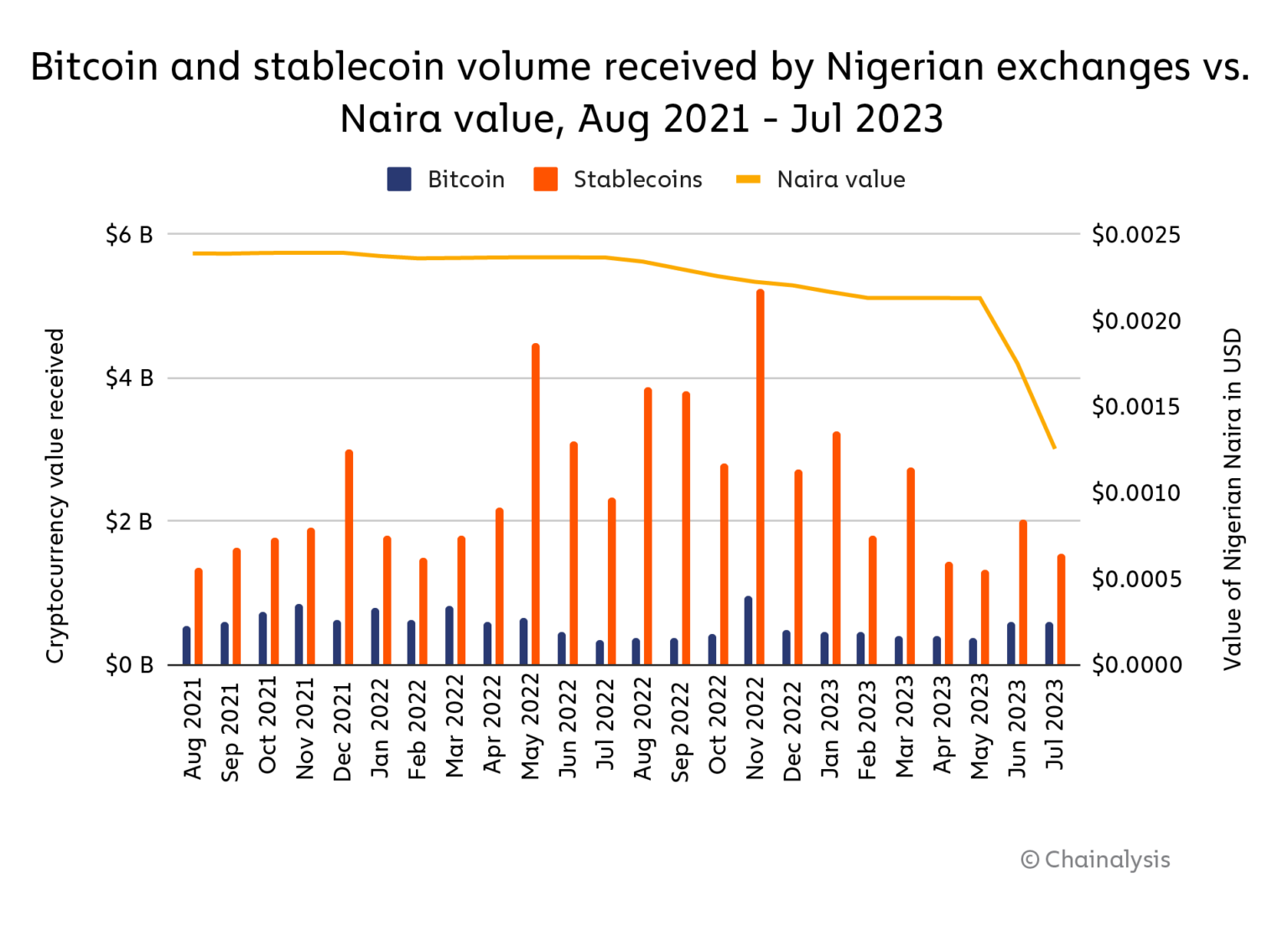Tether stablecoin sees increased usage in Africa since January — Chainalysis
This development confirms the growth in the USDT-dominated stablecoin market in Africa since 2022.

Blockchain analytics firm, Chainalysis, has said that the United States dollar (USD)-pegged stablecoin, USD Tether (USDT) has seen a notable surge in use in Africa since January 1. This confirms an increasing lean towards stablecoins for business purposes and value preservation in Africa within the last two years.
The details
- Per a Bloomberg report, the firm made the discovery in its analysis of data on first-time use of wallets holding USDT within certain periods during the day.
- The result shows a section of regions where the stablecoin is seeing increased usage, the report said.
- However, it added a caveat that the figures are not absolute references for location because a person could be anywhere in the world when they use a wallet.
- Among other trends, Chainalysis found that between January 1 and October 8, USDT’s use in Africa has gone up notably.
- Philip Gradwell, Tether’s head of economics told Bloomberg that the increase can be attributed to a wide use of stablecoins for cross-border payments and value preservation in the continent.
- Other experts corroborated Gradwell’s claims, adding that dollar-pegged stablecoins offer an alternative to the USD which is in short supply in many African countries.
- As such, they come in handy as a medium of exchange when issuing export and import invoices.
Key quote
- Ran Goldshtein, a senior vice president at the custody service provider, Fireblocks, said:
“In Africa, we’re seeing an explosion of stablecoin usage.”
Dive deeper
- In the last two years, there have been several indicators of a growing acceptance of stablecoins among Africans especially in the face of constantly devaluing local currencies.
- In its Geography of Cryptocurrency report for 2023, Chainalysis noted that Sub-Saharan Africa experienced a “proportionally large percentage of monthly stablecoin value” relative to other asset types.
- In its interactions with exchange operators, Mariblock reliably gathered that the crypto transaction volume in Africa has been tilting more towards stablecoins than other core cryptocurrencies in recent years.
- In its report for 2024, Chainalysis stated that stablecoins accounted for almost half of the total crypto transaction volume in Africa and more than double the volume of the most dominant crypto, bitcoin.

- This suggests that following the crypto bear market, more Africans are moving away from crypto as a speculative tool and are transitioning to stablecoins to hedge against inflation and access foreign exchange.
- To further confirm this, a quick look at the figures for Africa’s most dominant crypto market, Nigeria, shows increased stablecoin activity at times when the local currency drops in value.

- Chris Maurice, CEO of the pan-African exchange, Yellow Card, said the increase is largely due to a forex crisis affecting several African countries.
- He said:
“About 70% of African countries are facing an FX shortage, and businesses are struggling to get access to the dollars they need to operate. Stablecoins provide an opportunity for these businesses to continue to operate, grow, and strengthen the local economy.”



